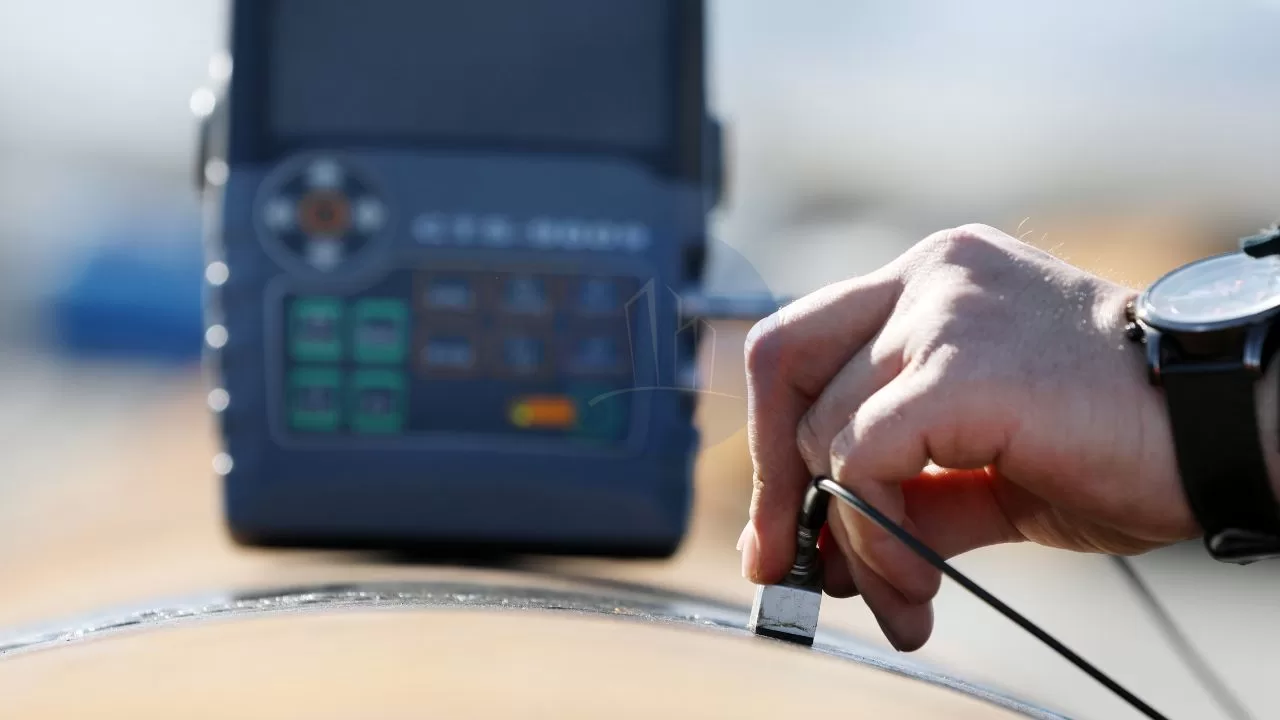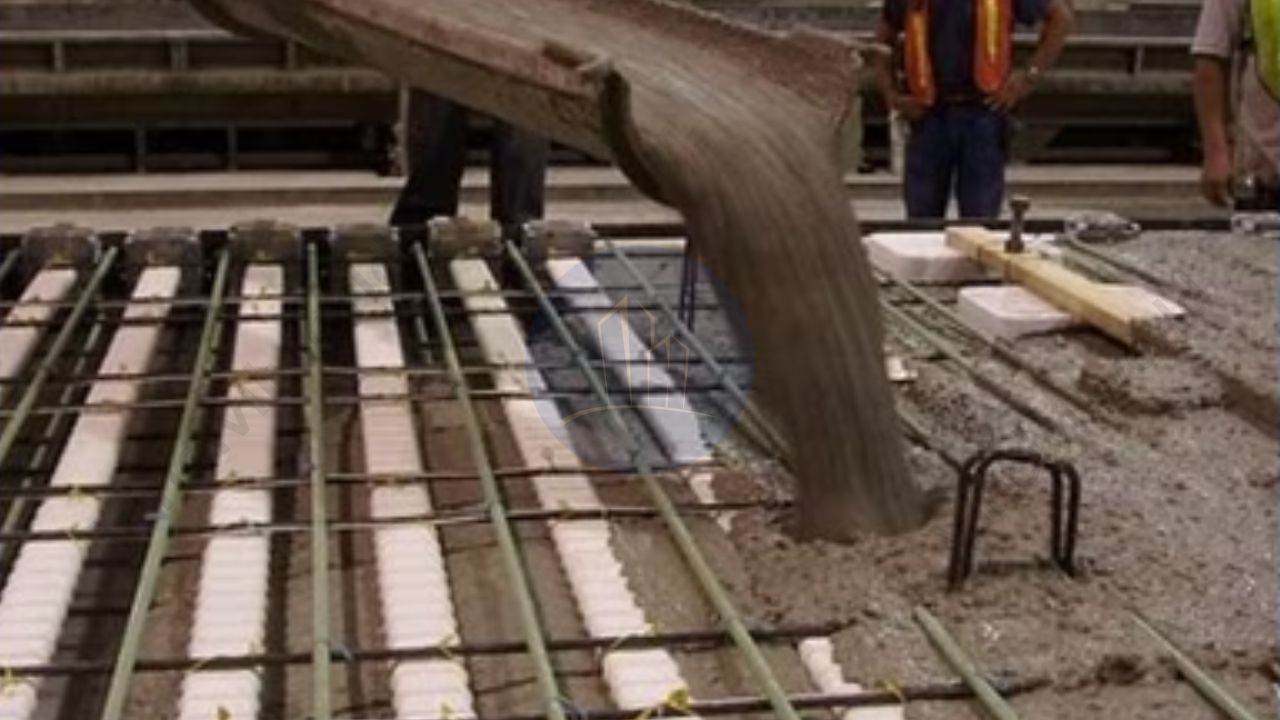Ultrasonic Pulse Velocity (UPV) test on concrete is a reliable, non-destructive method for assessing concrete quality and durability. An ultrasonic pulse is transmitted through the concrete in this method. The velocity is measured to detect variations in density and strength. UPV testing is very useful for identifying cracks, voids, and other flaws in concrete structures. It helps assess structural integrity without damaging the material. People commonly refer to this technique as UPV tests, or UPV tests on concrete. Specialized UPV testers deliver accurate, quick results. Industries favor UPV testing for its efficiency, cost-effectiveness, and precision in evaluating concrete conditions.
This article discusses the Ultrasonic pulse Velocity (UPV) test procedure and its significance. It is one of the most well-liked and most reliable non-destructive tests carried out on concrete structures.
- Significance of Ultrasonic Pulse Velocity Test (UPV test)
- Ultra sonic Pulse Velocity test (UPV Test)
- Relevant IS code for Ultrasonic Pulse Velocity Test (UPV Test)
- Ultrasonic Pulse Velocity tester
- Principles of Ultrasonic Pulse Velocity test
- Objective of UPV tests
- Factors affecting Ultrasonic pulse velocity test
- Methodology of Ultrasonic Pulse velocity tests
- Result interpretation of UPV testing
- Conclusion
Significance of Ultrasonic Pulse Velocity Test (UPV test)
The ultrasonic pulse velocity test, or UPV test, is an example of a non-destructive concrete test. Generally, hardened concrete is subjected to non-destructive testing (NDT) and destructive tests (DT). Concrete is the world’s oldest and most significant construction material. Therefore, concrete testing is crucial for assessing the stability, strength, durability, and condition of structures.
Non-destructive testing of concrete is a way of analysing concrete structures without causing damage. This aids in ensuring the structural quality and condition. The strength of the concrete is also influenced by various characteristics. This includes hardness, density, curing circumstances, ingredient quality, workability and water-to-cement ratio, etc.
Also read : Bitumen tests – 9 tests for flexible pavements
What is Ultra sonic Pulse Velocity test (UPV Test)
The most efficient and fast method of testing concrete is through ultrasonic pulse velocity tests, or UPV tests.The UPV tests assess the quality of concrete by evaluating the travel time of ultrasonic pulse waves. The ultrasonic pulse wave’s frequency must remain in the 50–55 kHz range. The UPV tester’s pulse generator generates the pulses, which travel through the concrete. By monitoring the traversing distance and duration, the system determines the pulse velocity. Higher velocity indicates that the density and elastic modulus of the concrete are higher.
Cracks and defects in the structure are detected using UPV tests. Significant variations in pulse velocity values are indicative of broken and degraded concrete. The concrete’s density and wave velocity are related. Therefore, this test has a tremendous potential for evaluating the quality of concrete.
Relevant IS code for Ultrasonic Pulse Velocity Test (UPV Test)
The IS-13311 (Part 1):1992 (Reaffirmed-May 2013) “Non-Destructive Testing of Concrete- Methods of Test (Ultrasonic Pulse Velocity)” specifies the standard for the Ultrasonic Pulse Velocity Test (UPV Test).
Ultrasonic Pulse Velocity tester
The UPV tester is the name of the type of equipment used to measure ultrasonic pulse velocity. The following accessories are included in ultrasonic pulse velocity tester.
- Electrical Pulse generator
- Pair of Transducers (probes)
- Amplifier
- Electronic timing device
Principles of Ultrasonic Pulse Velocity test
The electrical pulse generator sends pulses through the UPV tester’s transducer.Through the concrete surfaces, the pulse generates many reflections. You can calculate the pulse velocity using the formula shown below.
Pulse velocity, V = L/T
where L is the traverse distance, T is the time for the receiver to receive the pulse
The geometry of the material is unrelated to the UPV test. Better concrete strength is associated with higher velocity, and vice versa. One of the dynamic tests for concrete is the ultrasonic pulse velocity test.
Objective of UPV tests
The main objectives of the ultrasonic pulse velocity test or UPV tests are
- To learn the homogeneity of the concrete.
- Determines the presence of cracks, voids and imperfections.
- To calculate the elastic modulus of concrete.
- Finds the quality of concrete relative to the standard requirements.
- To determine the age of concrete.
Factors affecting Ultrasonic pulse velocity test
The UPV test detects cracks and assists in structure development. However, several factors influence how the system measures pulse velocity. As a result, engineers cannot generally approximate compressive strength from the pulse velocity. The following are the elements that impact the UPV test.
- Presence of reinforcement
- Water content
- Mix proportion
- Temperature of concrete
- Concrete age
- Stress level of concrete
Ultrasonic Pulse velocity test procedure
Piezoelectric and magneto strictive types of transducers are suitable for use with the UPV test. Additionally, its frequency range should be between 20 and 150 kHz. The electronic timing device monitors time with an accuracy of 0.1 microseconds.
The transducer transmits the waves that travel through the concrete surface. The pulse waves generate electric signals when they reach the receiver transducer, and the receiver transducer detects these signals. The system then displays the traversal length as (L). The electronic timing device calculates how long it takes for signals to arrive. The system shows time as (T).
The Electronic timing device measures the receiving time of the signals. The time is denoted as (T).
Pulse velocity (v) = L/T
There are three common methods for doing UPV tests. They are direct method and indirect method.
- Direct Method of UPV Testing
- Indirect Method of UPV Testing
Direct method
The transmitter sends the maximum energy at right angles to its face. As a result, technicians place the receiving transducer directly opposite the transmitter to achieve the best results. They refer to this setup as the direct approach or cross probing.
Indirect method
In some circumstances, the opposite side of the structure may be inaccessible. Technicians install the receiving and transmitting transducers on the same face of the concrete member in this scenario. They call this the indirect method or surface probing. This approach is less effective than the direct approach. The surface concrete, which has different properties from the core concrete of the structural components, mostly influences the test findings.
Result interpretation of UPV testing
The density and elastic modulus of concrete are correlated with the ultrasonic pulse velocity. This in turn depends on the components, mixing processes, placement techniques, concrete compaction and curing, casting temperature, etc.
Advertisement
The main causes of internal cracks and pockets in concrete are lack of compaction and concrete segregation. Lower pulse velocity values are a result of these concrete defects. However, the laboratory tests might have confirmed a well-designed concrete.
The range of pulse velocity in the direct method is as shown below.
- Above 4.5 Excellent
- 3.5 to 4.5 Good
- 3.0 to 3.5 Medium
- Below 3.0 Doubtful
Conclusion
Engineers do not rely solely on the final assessment of compressive strength from UPV to determine concrete strength. They confirm the strength by comparing it with a compressive strength estimate derived from the same ingredient mix and conditions. They may also correlate the results of the UPV test with site tests conducted using similar ingredients. When compared to actual UPV intensities, the numbers may change by about 20%.






2 thoughts on “Ultrasonic pulse velocity test || UPV Test – Types and Methodology”
Comments are closed.